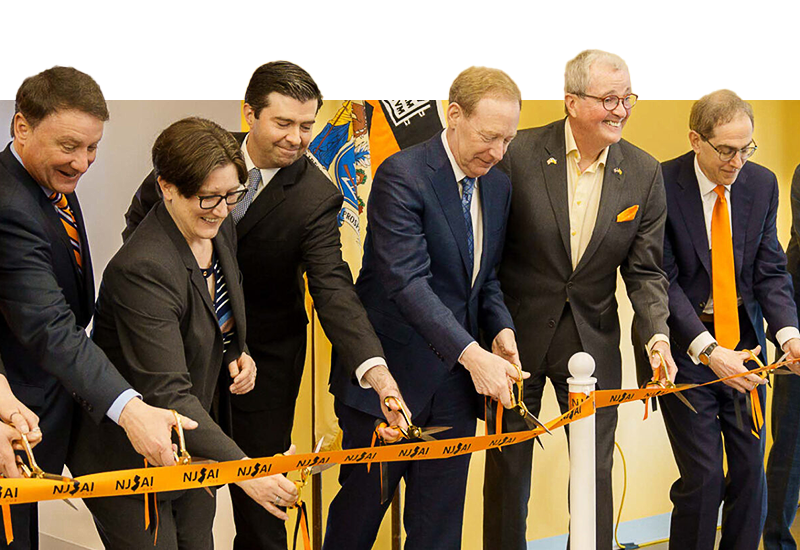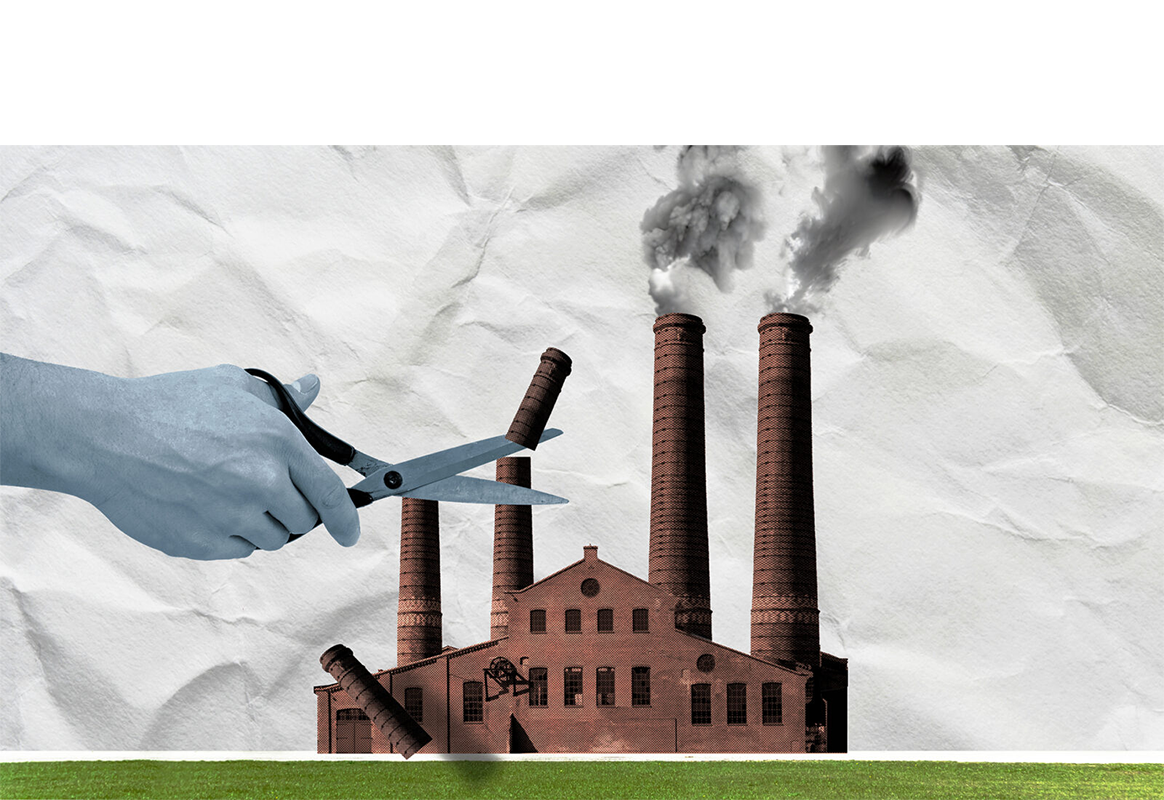New Andlinger building ‘defined by gardens’
By
on
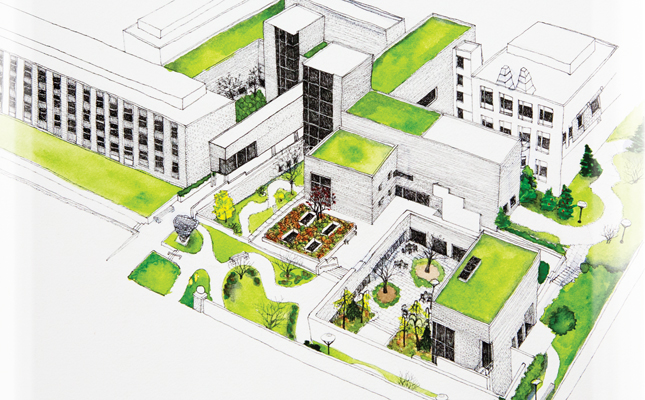
Meandering paths, sunken courtyards and gardens weave through the sculptural complex of gray brick and glass that has risen at the eastern edge of Princeton University.

After three years of construction, the Andlinger Center for Energy and the Environment has opened its doors, ushering in a new phase for the center’s goal of developing solutions to ensure our energy and environmental future.
Laboratories, finely tuned for atomic-level investigations, are beginning to hum with the collaborative work of researchers from across the University and industrial partners. Specialized spaces are filling with faculty, students, postdoctoral researchers and visitors creating materials that will help power cities, fuels that propel vehicles, and technologies that prevent and repair environmental damage.
“It’s an extraordinarily beautiful building,” said Emily Carter, the center’s founding director and the Gerhard R. Andlinger Professor in Energy and the Environment. “What it offers is absolutely state-of-the-art facilities where people want to come and work, and work together.”
 Princeton created the center in 2008 following a $100 million gift from international business leader Gerhard Andlinger, Class of 1952. The center’s mission, Carter said, is to preserve the planet through education and research on energy-related environmental issues and sustainable-energy technologies such as batteries, building design, solar cells and biofuels.
Princeton created the center in 2008 following a $100 million gift from international business leader Gerhard Andlinger, Class of 1952. The center’s mission, Carter said, is to preserve the planet through education and research on energy-related environmental issues and sustainable-energy technologies such as batteries, building design, solar cells and biofuels.
Gerhard Andlinger, Carter said, has long been a believer in investing in sustainability and alternative-energy technologies.
“We are incredibly grateful he had the vision to establish this center,” she said.
Carter is positioning the center to be a research hotbed and think tank through its labs, educational certificates for students, publications and events that bring together policymakers, researchers and students.
The center’s new building, designed by New York architects Tod Williams (A.B. ’65 MFA ’67) and Billie Tsien, has 129,000 square feet of labs, offices, instructional spaces, meetings areas and a lecture hall.
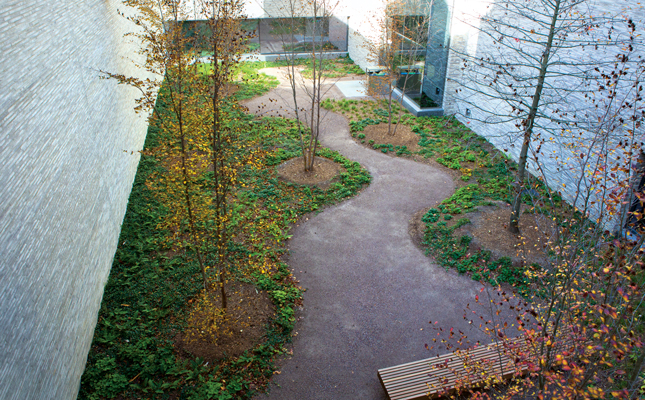
Designed to avoid a monolithic presence, the center appears to be several buildings. But it is actually one contiguous structure in its lowest level, much like an iceberg. While the building hunkers low in the landscape, its towers rise above the complex. Despite more than 60 percent of the building being below street level, light infuses the structure. Various spaces connect to gardens and three courtyards, which echo the University’s plazas.
A key feature of the building is the interweaving between the architecture and the gardens.
“All of the spaces of the building are defined by the gardens. They are the source of light, orientation and identity,” said University Architect Ronald McCoy M.Arch. ’80.
Also important, McCoy said, is the materiality of the architecture – the gray brick, the sandblasted concrete and the felt wall coverings, which show enlarged images from scientists’ notebooks such as those of Albert Einstein and Marie Curie.
In the complex’s lower spaces, an imaging and analysis center contains electron microscopes, which are situated on bedrock to minimize vibration. These instruments require shielding from electromagnetic interference and are thus cocooned in aluminum armor.
The Andlinger Center has 27,000 square feet of cleanrooms – spaces that have stainless steel ductwork that will filter and reduce airborne dust 1,000-fold. These ultraclean conditions are required for nanotechnology research and the creation of materials and devices such as plastic-based solar cells or superconducting materials. These spaces roughly double the amount of cleanroom space at Princeton.
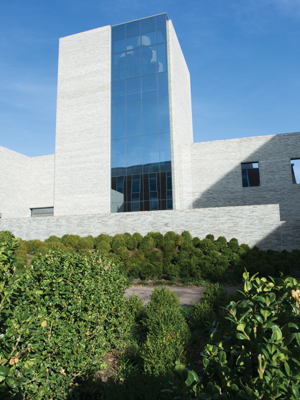 Research and teaching labs intersperse the building. In a lower level, the research commons provide working space for 42 students and postdoctoral scholars.
Research and teaching labs intersperse the building. In a lower level, the research commons provide working space for 42 students and postdoctoral scholars.
The lecture hall is named in recognition of a gift from Paul A. Maeder, Class of 1975. It seats 208 and is shaped inside like a crystalline geode.
The building’s mechanics also reflect the center’s mission to preserve the planet. An air-handling system relies mostly on the natural flow of air. To warm the building, a heat recovery system harvests heat from exhaust air and reduces energy consumption. Green roofs filled with plants filter and retain rainwater. Built on bedrock, the ground also insulates the complex.
Perhaps most important, the building offers a space for collaboration among researchers who were previously scattered across campus. Among those who will be working in the lab are four recently hired faculty members who last year began a joint project to design long-lasting, inexpensive and environmentally friendly structures. Coming from the fields of architecture and mechanical, electrical and civil engineering, they had met after joining the Andlinger Center.
“The problems we face – both technologically and in terms of policy and economics – are not going to be solved just by one expert in one discipline,” Carter said. “They are all complex problems and they require a team effort.”
The new building should accelerate this kind of fruitful, cross-fertilization of research and lead to a better future, she said.
“We are working to make the world a better place,” Carter said. “It’s very meaningful, it’s incredibly important, and it gives you a real sense of satisfaction and reward knowing you are doing something good for the rest of the world.”
